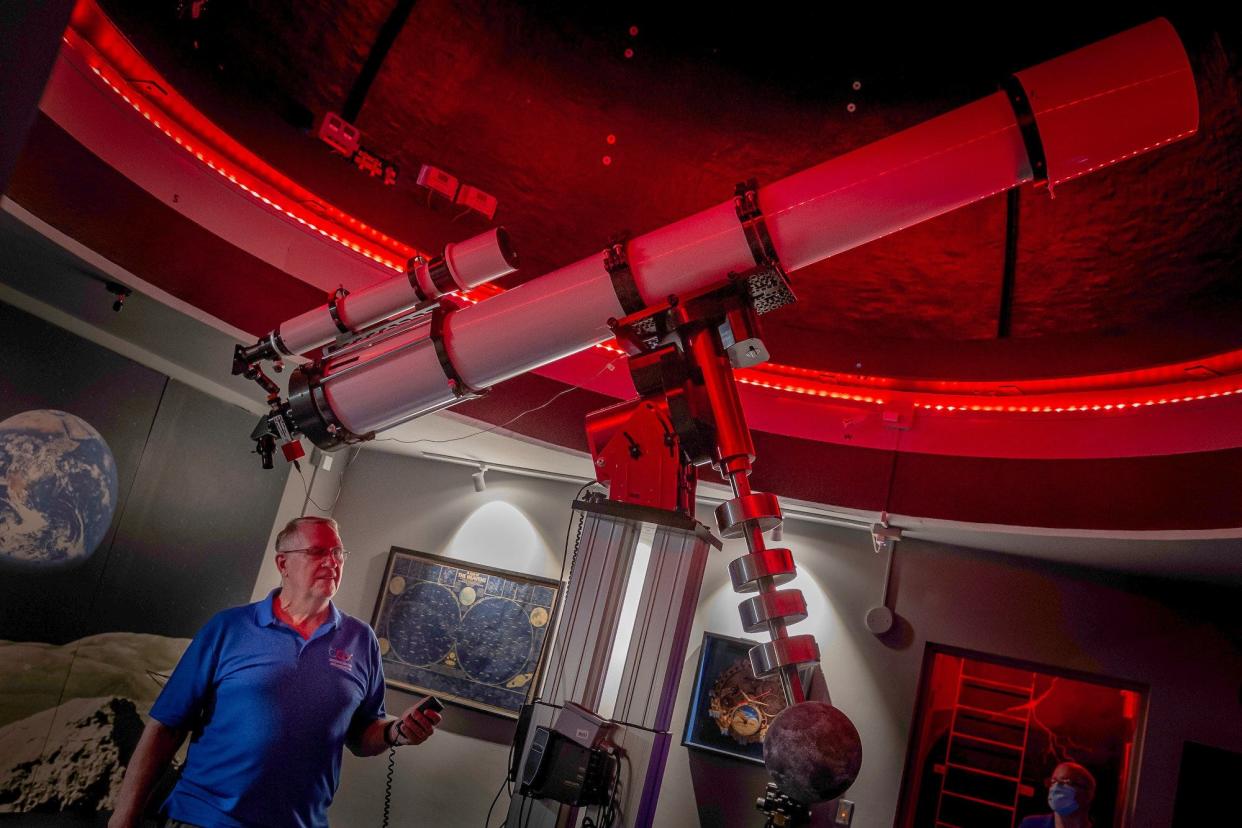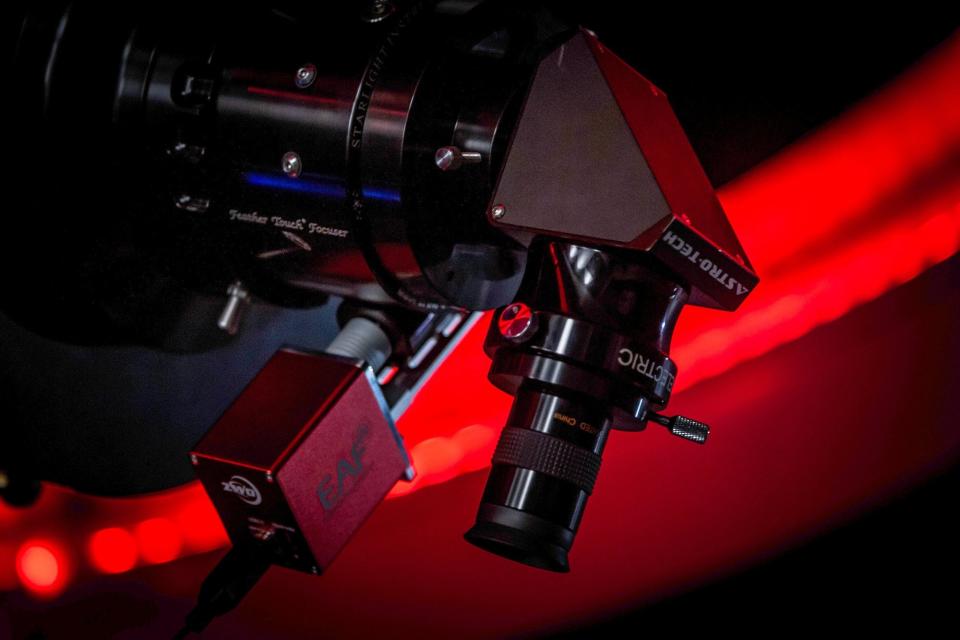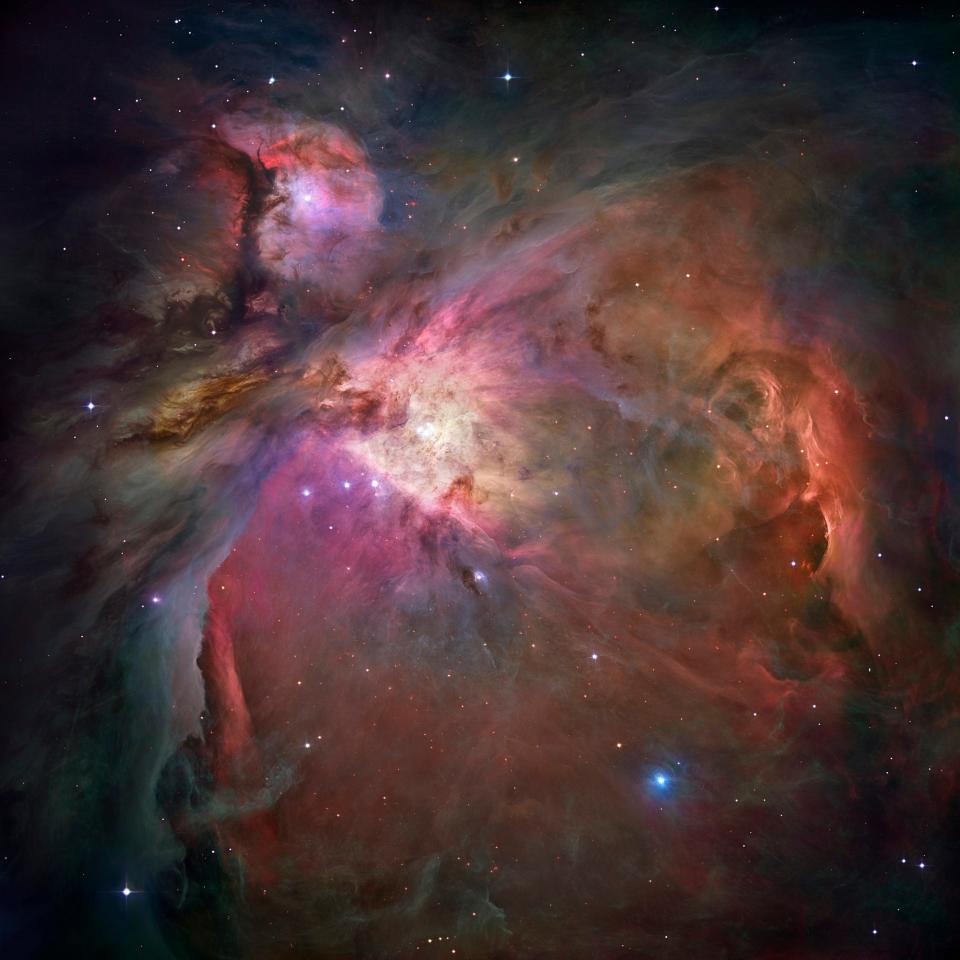South Florida stargazers have a new and improved option to see the wonders of the universe

The Astronomical Society of the Palm Beaches has built a machine that penetrates South Florida’s dark sky desert for a peek at celestial spectacles thousands of light years from Earth.
Housed at the Cox Science Center and Aquarium in West Palm Beach, the 10-inch refractor telescope with double lenses was specially chosen for its enhanced resolution amid intense and relentless coastal light pollution.
Finished in the spring of 2020, the astronomical society and science center staff have quietly welcomed visitors in to see the telescope, waiting out the early throes of COVID-19, the pandemic closures and subsequent variant spikes.
But nearly two years later they are ready to publicize the newish scope paid for with $50,000 in donations and untold hours of donated labor.
“When people come up to see it, they are literally blown away,” said Bill Bucklew, a past president of the society who helped build the telescope. “We put Saturn in the eyepiece and they do a double take and want to know if it’s real or did we paint something on the lens.”
Marc Wiskoff, a senior technical advisor and adjunct curator at the science center, said the telescope is the largest public refractor scope in South Florida. It replaced a reflector telescope – so named because it uses mirrors – that was on a decades-old “rickety” wooden platform that jostled the telescope and the people trying to look through it.
Related: Cox Science Center's new exhibit encourages everyone to 'rethink the future' of Earth
More science news: 'Daring' coral rescue as officials attempt to safeguard genetics of Florida reef tract
Also, reflector telescopes can have fuzzier images than refractor scopes, leaving people wondering what they were actually seeing.
“Regular folks couldn’t care less about a fuzzy snowball 2 million light years away,” Wiskoff said. “The folks in our community want to see the sun, the moon, Venus, Jupiter, Saturn’s rings, and the reflector was not the way to do it.”

It took about 18 months to build the refractor telescope, which is 10-feet long and sits on a computerized mount. To accommodate social distancing guidelines, a camera was attached to the eyepiece to project what the telescope is seeing onto a large screen in the observatory.
“We’ve been surprised at some of the things we’ve seen,” Bucklew said. “It’s a whole different experience.”
The Caldwell 39 nebula, an amorphous mass of glowing material from a dying star in the Gemini constellation, has come into view through the telescope. It’s 6,520 light years away, Bucklew said.
Winter skies means the telescope will likely focus on planets Uranus and Neptune, the crab nebula in Taurus and the Orion nebula, which just below the starry belt of the mythical huntsman.

Florida Atlantic University’s observatory has a 14-inch Cassegrain reflector telescope, which may have a lower resolution than a refractor but is a better fit for FAU’s dome.
FAU astronomer Eric Vandernoot said there are tradeoffs between the two types of telescopes. He lauded the center for the addition of the 10-inch refractor.
“The more eyes that we have looking up, the more interest we should get in protecting our views of the majestic heavens above us all,” Vandernoot said.
'We were gobsmacked': 'We were gobsmacked': Great hammerhead shark nursery discovered in urban area of Florida
More: Marine industry blocks slower boat speeds in popular Jupiter Narrows after FWC approval
Members of the astronomy club are typically at the center’s observatory on clear-sky Wednesday nights from sunset to 9 p.m. While the center at 4801 Dreher Trail N. is closed at the time, Bucklew said a sign is posted with a phone number to call for an escort to the observatory.
"We have a lot more surprises in store with the winter season," Bucklew said.
Kimberly Miller is a veteran journalist for The Palm Beach Post, part of the USA Today Network of Florida. She covers weather, climate and the environment and has a certificate in Weather Forecasting from Penn State. Contact Kim at kmiller@pbpost.com
This article originally appeared on Palm Beach Post: Astronomical Society of the Palm Beaches built new refractor telescope

